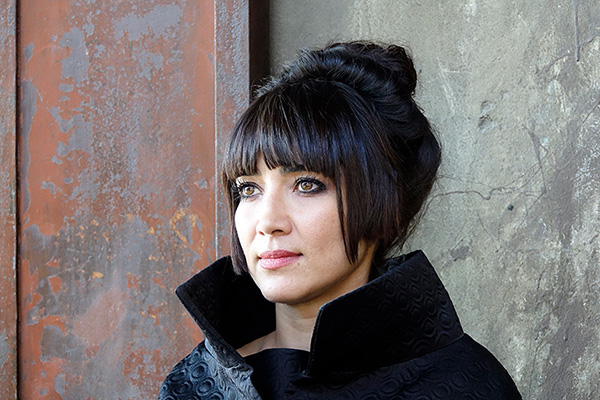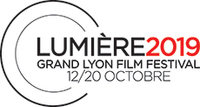Interview with
Mitra Farahani
PostED ON OCTOBER 15 AT 11:45AM
A painter, director, screenwriter and producer, Mitra Farahani pays tribute to two Iranian filmmakers, Forough Farrokhzad and Ebrahim Golestan. Tuesday at the Institut Lumière, she will present these two artists and introduce these two gems, part of the “Treasures and Curiosities” series.
 Copyright Institut Lumière / Sandrine Thesillat / Jean-Luc Mège Photographie
Copyright Institut Lumière / Sandrine Thesillat / Jean-Luc Mège Photographie
You have come to introduce The House is Black by the poet and director Forough Farrokhzad. How would you describe her style as a filmmaker?
Forough Farrokhzad is one of the greatest contemporary Iranian poets. She started out working in the Golestan studios in the late 1950s as an assistant and learned how to connect images. The House is Black is an emblematic and important film of Iranian cinema, often presented as Forough Farrokhzad’s only foray into filmmaking. But in fact, there is an experimental short film made by Forough Farrokhzad, entitled Chaleur, which predates The House is Black and has never been released, I hope we’ll get to see it one day!
Forough Farrokhzad succeeded in creating an original poetic film style. The entire structure of The House is Black lets the poetry of Forough Farrokhzad’s words work itself into the silence of its moving images, and through this gesture, creates authentic cinematic poetry. I have a feeling that Forough Farrokhzad understands the essence of man; whatever medium she works with, she makes a poem out of it! What better answer to Rilke’s question: “What good are poets times of distress?” than the work of Forough Farrokhzad?
The film “The Hills of Marlik” by director and writer Ebrahim Golestan will also be presented to the public. Why did you choose this particular film?
The Hills of Marlik is a major literary piece that awakens and reveals images. Literature is embedded within Iranian cinema. Its cinema is built on the continuity of a literary and poetic culture, and The Hills of Marlik is a clear example of that.
Forough Farrokhzad was the first Iranian woman to direct a documentary. Ebrahim Golestan founded the first independent production company in Iran. How would you describe this couple of artists who has left such a mark on Iranian culture?
Forough Farrokhzad was already a well-established poet when she began working with Ebrahim Golestan, but her work took on a whole other dimension after they met. There was a kind of whirling symbiosis of intuitions and forms that circulated between Ebrahim Golestan and Forough Farrokhzad.
Unfortunately, Forough Farrokhzad quickly passed away after a car accident in 1967. The fruit borne from their short collaboration is an intellectual and creative effervescence; it is impossible to think of the work of one without thinking of the work of the other. We are trying to bring back this joint work, these films left as a legacy, to restore their place in our film heritage.
You are a painter, director, producer, screenwriter? How did their artistic production influence your work?
The Hills of Marlik concludes with the sentence, “May the eye see!” This wish reflects Ebrahim Golestan’s great concern for mankind. It is the epicenter of his work and his being. This concern was passionately well-translated by Forough Farrokhzad in her cinematographic work. And its intention still echoes throughout my own work.
What film projects are you currently working on?
I am actually working on a film that expresses my desire to be affected by this contagion, to be touched by this wish expressed by Ebrahim Golestan. The film I am working on is a correspondence between Ebrahim Golestan and Jean-Luc Godard.
Interview by Laura Lépine

